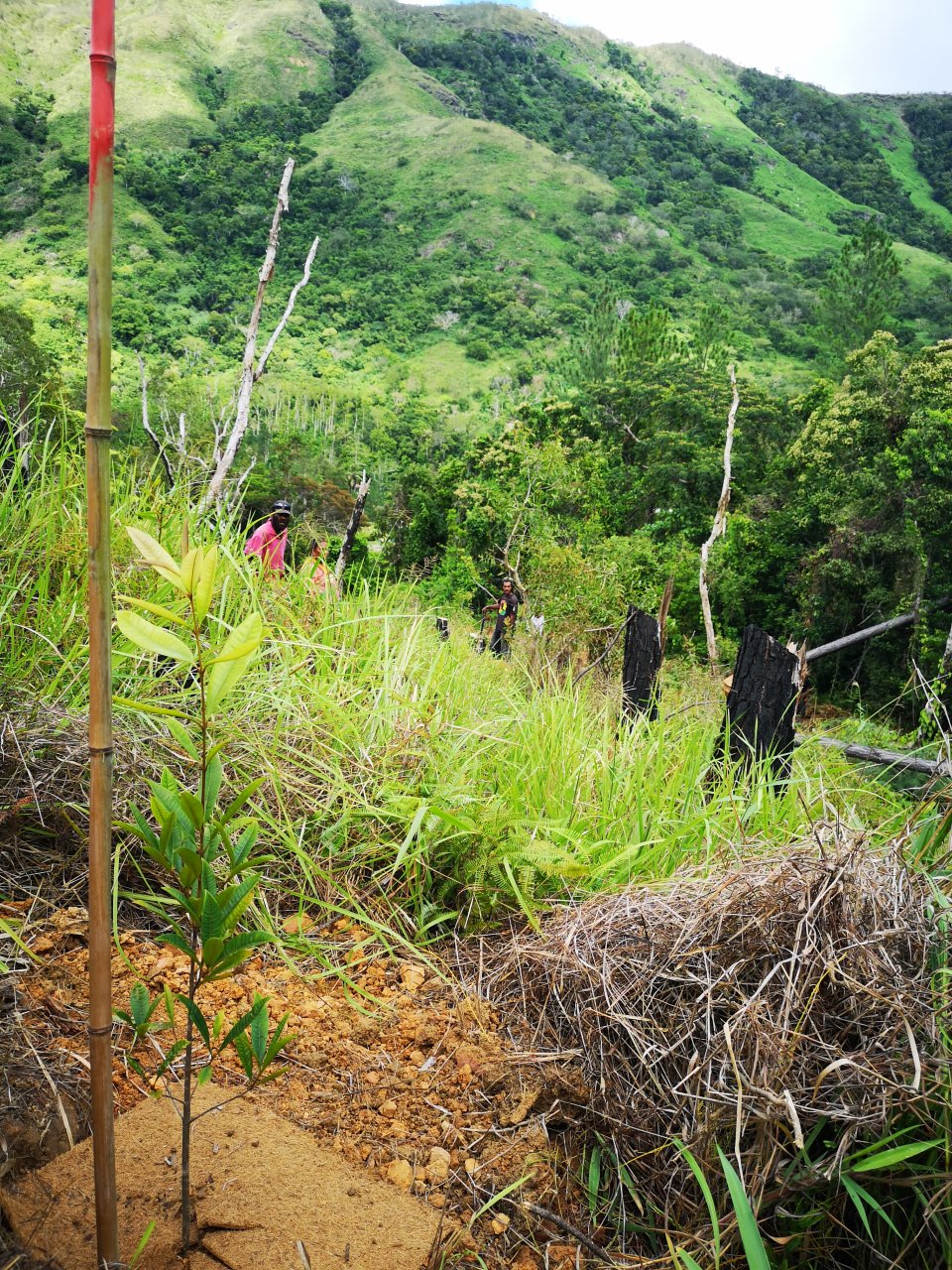
On 22nd November 2016, exceptionally heavy rains led to serious floods and deadly mudslides, which caused the death of 8 people and approximately 10 million euros of damage in the commune of Houailou. This catastrophe mainly affected zones that had been degraded (by recurrent fires, scraper mining and invasive species), highlighting the importance of conserving and restoring ecosystems to protect them from natural risks and strengthen the resilience of local communities with regard to climate changes.
Societal challenges :
- For adaptation to climate changes : soil erosion mitigation and flood prevention.
- For biodiversity : facilitating the recovery of biodiversity.
The REPISE Project, designed and led by the Houailou municipal authority in response to this need, is the winner of a national ADEME request for proposals concerning projects for “pilot sites for the recovery of biodiversity.” Its aim is to restore terrestrial ecosystems in order to mitigate soil erosion, prevent the risks of drying out, landslides and floods, and facilitate the recovery of biodiversity. To achieve this objective, the municipal authority developed various restoration measures in zones identified as high-priority (catchments providing drinking water, former mining sites, places of cultural importance, etc.): relief renovation on scrape-mined areas, anti-erosion systems such
as fascines (bundles of interwoven branches),
regulation of invasive alien species, planting
of some hundred forest species endemic or
indigenous to the bioregion, and protection of
the restored area from degradation by invasive
ungulates and assisted natural regeneration in
several areas.
Launched in April 2018 for a provisional duration
of three years, REPRiSE is characterised by
an innovative and participative system of
governance that involves local communities
in the co-management of the environment,
together with institutions, technical partners
and the industrial companies co-funding the
project, with a view to sustaining the activities
undertaken.
BENEFITS REGARDING TARGETED ADAPTATION ISSUES
• Reduced soil erosion
• Reduced risk of flooding
BENEFITS FOR BIODIVERSITY
• 40 ha reforested with local tree species suited to climatic conditions on 7 high-priority sites (4 catchments providing drinking water, 1 former mine, 2 areas of heavy land disturbance due to the omnipresence of pigs and deer species together with recurrent fires), and 2 demonstrational/educational sites (upstream of the private catchment of an agricultural high school and on the orienteering ground of a professional high school);
• 20 ha of proliferating Caribbean pine (Pinus caribaea) eliminated and replaced by some hundred endemic forest species as recommended by a botanist. Planting of about 20 species in each zone (such as the Blue Marble Tree (Elaeocarpus angustifolius), Koghis Kauri (Agathis lanceolata) or Large-flowered Crossostylis (Crossostylis grandiflora)).
OTHER BENEFITS
• Involvement of local stakeholders in the project (local communities, industrial companies, institutions)
• Capacity-building of local hunters and NGOs
• Reduction of fire risks due to human causes by the involvement of local people in the project.
- Developing climate change adaptation; improving risk management and resilience
- Reduce flood risk
Levers of success
• Technical skills: the skills of all the project partners (departments of the institutions responsible and industrial partners, public organisations supporting the project, etc.) enabled realistic and appropriate objectives and implementation methodologies to be defined.
• Funding: the success of the work carried out and the popularity of the project with local communities greatly contributed to convincing private investors to provide the finances for the REPRISE funding plan.
• Governance/concertation: the involvement of customary representatives in governance and the high level of concertation with local communities throughout the project enabled and maintained support for it among local people, who took the project onboard and actively participated in its implementation.
• French Agency for Ecological
Transition (ADEME) (56%)
• Eramet-SLN mining group (34%)
• ENERCAL hydroelectric company (5%)
• Municipal authority of
Houaïlou(5%)
Total budget : 1,463,000€
Jean-Luc Datim
Deputy General Secretary, Houaïlou Commune
sga@mairie-houailou.nc
Further information
The results were communicated throughout the project at various
levels: promotion of the restoration works on social media, local
media coverage of official ceremonies or events, publication
of articles on the project in the municipal newsletter and an
illustrated progress report every four months for the stakeholders.
Communication media aimed at young people, the general public
and/or private organisations were also produced, in order to assist
with the replication of the project: a cartoon, a documentary and
a technical brochure.
